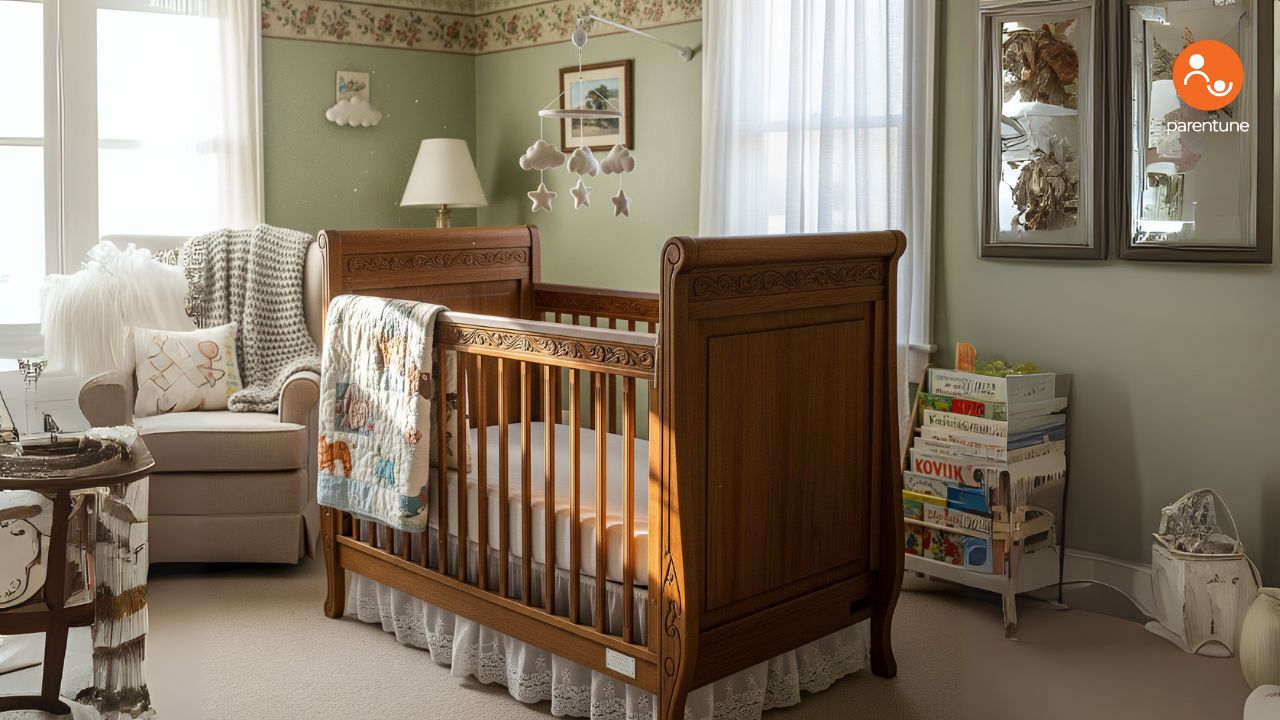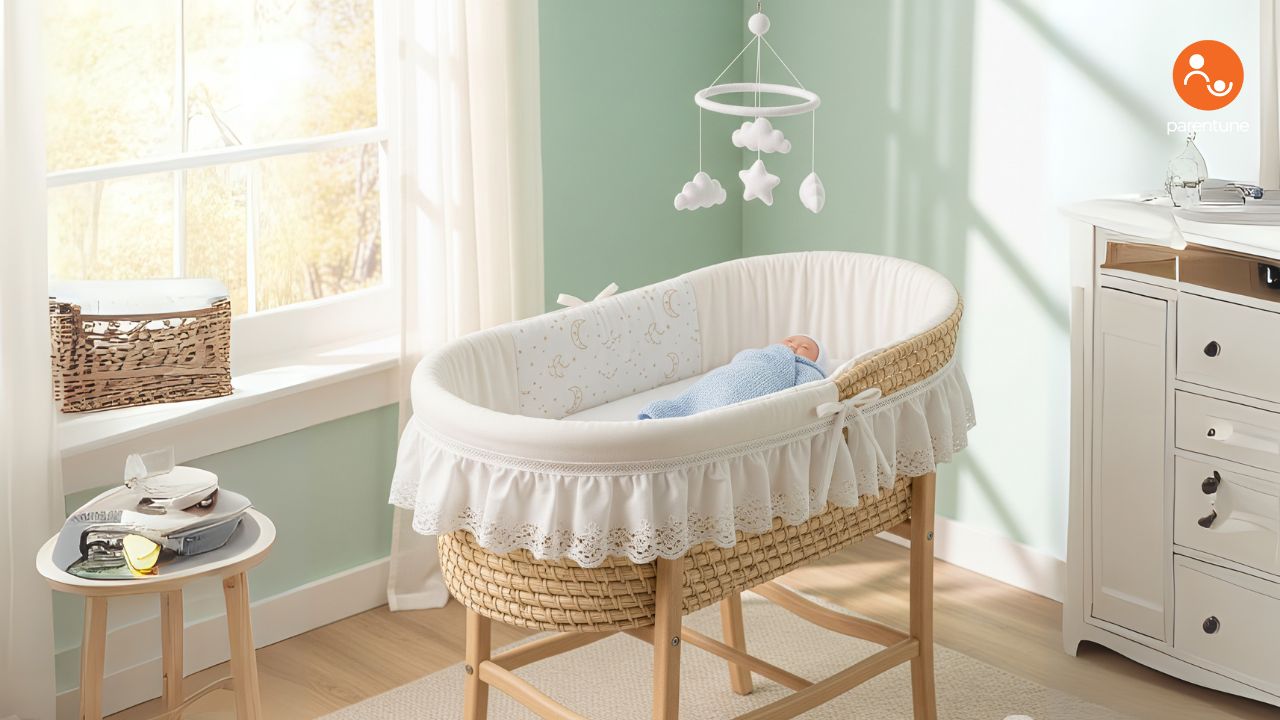babycare-products
Crib Vs Bassinet: What’s Better For Your Baby?

The hidden trade-offs behind your baby's first bed
Start with this image.
It’s 2 a.m.
You’re standing in the nursery. Eyes half-shut. Baby stirring. You’re trying to remember if you chose the crib because it felt sturdy… or because it was on sale.
Or maybe you went with the bassinet because everyone else said it was easier in the first few months.
Doctor Q&As from Parents like you
This isn’t just a furniture decision.
It’s a system design choice—for sleep, for safety, for sanity.
Let’s unpack it properly.
What’s The Real Difference Between A Crib And A Bassinet?
Not just shape. Not just size.
A crib is a long-term investment. Think of it as your baby’s personal apartment—durable, roomy, with room to grow. It often converts into a toddler bed and stays in your home for years.
A bassinet is a pop-up studio. Cozy. Lightweight. Made for the early days when you need proximity more than permanence.
Both are safe. But the context in which they shine? That’s where things shift.
Recommended Reads:
When does a bassinet make more sense?
In the first 4–5 months, when your baby’s sleep is light and your instincts are loud.
Here’s why many first-time parents lean into bassinets:
-
Portability: You can move it between rooms. Bedroom at night. Living room by day.
-
Proximity: Most models fit beside your bed, allowing easier access for night feeds or quick check-ins.
-
Comfortable cocoon: The snug design mimics the womb, helping many newborns settle better.

One Parentune mom shared how she could gently rock her bassinet with her foot while lying in bed—a micro-movement that meant more sleep for both of them.
But—and this matters—you’ll outgrow it fast.
By the time your baby rolls over or pushes up (around 4–6 months), it’s time to transition.
When Is A Crib The Better Long-Term Play?
If you're thinking beyond the fourth trimester, a crib starts to pull ahead.
Here’s what cribs offer:
-
Longevity: Many cribs convert into toddler or even preschool beds.
-
Stability: Solid frames that can handle movement, weight, and time.
-
Storage or multi-function: Some cribs come with drawers, changers, or can be part of a matching nursery set.
You give up the bedside convenience. But gain the peace of a one-time setup.
Many Parentune community parents say they started with a crib from day one—with a firm mattress and a baby monitor close by. Some even used crib wedges and breathable bumpers (all only after checking safety guidelines, of course).
What Does Science Say About Safety?
Let’s get blunt:
Both are safe—if used correctly.
But each has its own safety window.
Bassinet Safety Checklist
-
Use only as long as baby isn’t rolling over or pushing up
-
Keep sides breathable and free from loose bedding
-
Avoid attachments like mobiles once baby starts grabbing
Crib Safety Checklist
-
Ensure bars are no more than 2 3/8 inches apart
-
Use a firm mattress that fits snugly
-
No pillows, blankets, or stuffed toys inside
-
Mattress height should be adjusted as baby grows
Parentune Tip:
Always check for recent recalls. Especially if you’re inheriting a crib from an older sibling or a family friend.
Cost Isn’t Just About Money—It’s About Timing
Let’s do a quick mental math:
The Bassinet Route
-
Cost: ₹4,000–₹12,000+
-
Use window: ~4 months
-
Benefit: Nighttime closeness, smoother postnatal recovery, especially post C-section
The Crib Route
-
Cost: ₹7,000–₹25,000+
-
Use window: 2–5 years (if convertible)
-
Benefit: One-time setup, no need to transition midway
Middle path?
Some parents start with a bassinet for the early weeks, then shift to a crib—sometimes even co-sleeping in between. Not perfect. But very human.
Also read:
What’s The Better Choice For Your Baby?
Wrong question.
The better question is:
What’s the better choice for your system—your space, your schedule, your sleep needs?
Here’s a framework:
Choose a bassinet if:
-
You live in a compact space
-
You want bedside sleep for easier night feeds
-
You plan to breastfeed and recover from a C-section
-
You want flexibility and mobility

Choose a crib if:
-
You’re ready for a long-term sleep solution
-
You want one-time setup with fewer transitions
-
Your baby’s room is already set up
-
You have safety concerns about soft or unstable sleeping spaces
Real Parents, Real Stories—From The Parentune Community
One couple shared how their baby hated the bassinet from day one—but slept soundly in the crib.
Another mom swore by her portable bassinet during the early weeks of postpartum exhaustion, saying it “saved my back, my sleep, and my sanity.”
These aren’t just anecdotes.
They’re proof that the “best” option is deeply personal—and sometimes unpredictable.
That’s why Parentune exists—to help you make decisions rooted in both expert guidance and lived experience. No judgment. Just support.
What’s The Hidden System Behind Your Baby’s Sleep?
Every sleeping space is a signal.
A bassinet says: Stay close. It's still new.
A crib says: We’re settling in. This is home.
Neither is wrong. Both are part of a system that will evolve as your baby does.
The trick is not to obsess over what's better.
It's to stay responsive—to your baby, your body, your bandwidth.
That’s the real parenting upgrade.
Final Thought?
The best bed is one that works for your baby’s safety—and your sanity.
And when in doubt, don’t do it alone.
You’ve got the Parentune community—where answers meet empathy, and choices feel a little less overwhelming.
Be the first to support
Be the first to share
Related Blogs & Vlogs
No related events found.